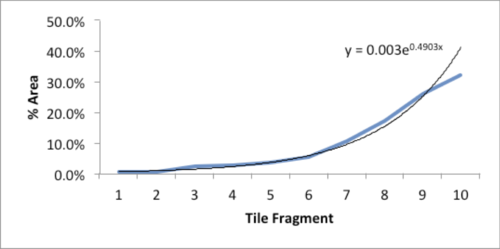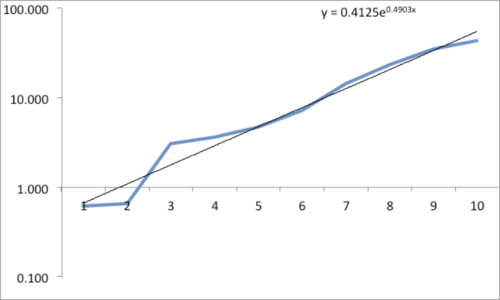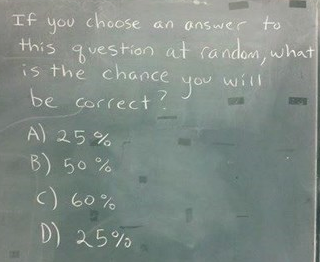Sandbox: Difference between revisions
| Line 8: | Line 8: | ||
Dr. (LeFever) Watson recently wrote with a link to the foliowing paper, which chronicles the history of the controversy over the last decade. | Dr. (LeFever) Watson recently wrote with a link to the foliowing paper, which chronicles the history of the controversy over the last decade. | ||
[http://www.ncbi.nlm.nih.gov/pmc/articles/PMC3918118/ Shooting the messenger: The case of ADHD]<br> | :[http://www.ncbi.nlm.nih.gov/pmc/articles/PMC3918118/ Shooting the messenger: The case of ADHD]<br> | ||
by Gretchen LeFever Watson, et. al., ''Journal of Contemporary Psychothererapy'', 2014; 44(1): 43–52. | :by Gretchen LeFever Watson, et. al., ''Journal of Contemporary Psychothererapy'', 2014; 44(1): 43–52. | ||
This is a detailed narrative full of twists and turns, well worth reading as a story about what can happen when scientific investigation clashes with commercial interests. Dr. Watson was ultimately cleared of the misconduct charge. Nevertheless, pharmaceutical companies have successfully deflected criticism and promoted the wider use of drugs like Ritalin, even for adults. The paper concludes that "The rate of ADHD diagnosis now exceeds all reasonable estimates of the true prevalence of the disorder. As a consequence, ADHD drugs are readily available on American high school and college campuses where they are increasingly abused with serious and sometimes lethal consequences." | This is a detailed narrative full of twists and turns, well worth reading as a story about what can happen when scientific investigation clashes with commercial interests. Dr. Watson was ultimately cleared of the misconduct charge. Nevertheless, pharmaceutical companies have successfully deflected criticism and promoted the wider use of drugs like Ritalin, even for adults. The paper concludes that "The rate of ADHD diagnosis now exceeds all reasonable estimates of the true prevalence of the disorder. As a consequence, ADHD drugs are readily available on American high school and college campuses where they are increasingly abused with serious and sometimes lethal consequences." | ||
| Line 15: | Line 15: | ||
Regarding this last point, see also the following news story. | Regarding this last point, see also the following news story. | ||
[http://www.nytimes.com/2013/12/15/health/the-selling-of-attention-deficit-disorder.html?ref=opinion The selling of attention deficit disorder]<br> | :[http://www.nytimes.com/2013/12/15/health/the-selling-of-attention-deficit-disorder.html?ref=opinion The selling of attention deficit disorder]<br> | ||
:by Alan Schwarz, ''New York Times'', 14 December 2013 | |||
According to the article, "Few dispute that classic A.D.H.D., historically estimated to affect 5 percent of children, is a legitimate disability that impedes success at school, work and personal life." However, "recent data from the Centers for Disease Control and Prevention show that the diagnosis had been made in 15 percent of high school-age children, and that the number of children on medication for the disorder had soared to 3.5 million from 600,000 in 1990." | According to the article, "Few dispute that classic A.D.H.D., historically estimated to affect 5 percent of children, is a legitimate disability that impedes success at school, work and personal life." However, "recent data from the Centers for Disease Control and Prevention show that the diagnosis had been made in 15 percent of high school-age children, and that the number of children on medication for the disorder had soared to 3.5 million from 600,000 in 1990." | ||
Revision as of 20:01, 12 January 2015
Some math doodles
<math>P \left({A_1 \cup A_2}\right) = P\left({A_1}\right) + P\left({A_2}\right) -P \left({A_1 \cap A_2}\right)</math>
Overdiagnosing ADHD
The post Can you get fired over the wording of a questionnaire? (Chance News July-August 2005) described the case of Dr. Gretchen LeFever, a clinical psychologist whose survey work raised questions about the apparent over-diganosis and over-treatment of ADHD (attention deficit hyperactivity disorder) in children. Her work was sharply criticized by other researchers with ties to pharmaceutical companies, and she was subject to an anonymous charge of scientific misconduct based on the wording of her questionnaire.
Dr. (LeFever) Watson recently wrote with a link to the foliowing paper, which chronicles the history of the controversy over the last decade.
- Shooting the messenger: The case of ADHD
- by Gretchen LeFever Watson, et. al., Journal of Contemporary Psychothererapy, 2014; 44(1): 43–52.
This is a detailed narrative full of twists and turns, well worth reading as a story about what can happen when scientific investigation clashes with commercial interests. Dr. Watson was ultimately cleared of the misconduct charge. Nevertheless, pharmaceutical companies have successfully deflected criticism and promoted the wider use of drugs like Ritalin, even for adults. The paper concludes that "The rate of ADHD diagnosis now exceeds all reasonable estimates of the true prevalence of the disorder. As a consequence, ADHD drugs are readily available on American high school and college campuses where they are increasingly abused with serious and sometimes lethal consequences."
Regarding this last point, see also the following news story.
- The selling of attention deficit disorder
- by Alan Schwarz, New York Times, 14 December 2013
According to the article, "Few dispute that classic A.D.H.D., historically estimated to affect 5 percent of children, is a legitimate disability that impedes success at school, work and personal life." However, "recent data from the Centers for Disease Control and Prevention show that the diagnosis had been made in 15 percent of high school-age children, and that the number of children on medication for the disorder had soared to 3.5 million from 600,000 in 1990."
The article quotes Dr. Keith Conners, a early pioneer in treating ADHD, who laments the current state of affairs: “The numbers make it look like an epidemic. Well, it’s not. It’s preposterous. This is a concoction to justify the giving out of medication at unprecedented and unjustifiable levels.”
Submitted by Bill Peterson
Comic relief for exam week
Frank Swenton sent the following cartoon from CHEEZburger.com:
Accidental insights
My collective understanding of Power Laws would fit beneath the shallow end of the long tail. Curiosity, however, easily fills the fat end. I long have been intrigued by the concept and the surprisingly common appearance of power laws in varied natural, social and organizational dynamics. But, am I just seeing a statistical novelty or is there meaning and utility in Power Law relationships? Here’s a case in point.
While carrying a pair of 10 lb. hand weights one, by chance, slipped from my grasp and fell onto a piece of ceramic tile I had left on the carpeted floor. The fractured tile was inconsequential, meant for the trash.

As I stared, slightly annoyed, at the mess, a favorite maxim of the Greek philosopher, Epictetus, came to mind: “On the occasion of every accident that befalls you, turn to yourself and ask what power you have to put it to use.” Could this array of large and small polygons form a Power Law? With curiosity piqued, I collected all the fragments and measured the area of each piece.
| Piece | Sq. Inches | % of Total |
|---|---|---|
| 1 | 43.25 | 31.9% |
| 2 | 35.25 | 26.0% |
| 3 | 23.25 | 17.2% |
| 4 | 14.10 | 10.4% |
| 5 | 7.10 | 5.2% |
| 6 | 4.70 | 3.5% |
| 7 | 3.60 | 2.7% |
| 8 | 3.03 | 2.2% |
| 9 | 0.66 | 0.5% |
| 10 | 0.61 | 0.5% |

The data and plot look like a Power Law distribution. The first plot is an exponential fit of percent total area. The second plot is same data on a log normal format. Clue: Ok, data fits a straight line. I found myself again in the shallow end of the knowledge curve. Does the data reflect a Power Law or something else, and if it does what does it reflect? What insights can I gain from this accident? Favorite maxims of Epictetus and Pasteur echoed in my head: “On the occasion of every accident that befalls you, remember to turn to yourself and inquire what power you have to turn it to use” and “Chance favors only the prepared mind.”

My “prepared” mind searched for answers, leading me down varied learning paths. Tapping the power of networks, I dropped a note to Chance News editor Bill Peterson. His quick web search surfaced a story from Nature News on research by Hans Herrmann, et. al. Shattered eggs reveal secrets of explosions. As described there, researchers have found power-law relationships for the fragments produced by shattering a pane of glass or breaking a solid object, such as a stone. Seems there is a science underpinning how things break and explode; potentially useful in Forensic reconstructions. Bill also provided a link to a vignette from CRAN describing a maximum likelihood procedure for fitting a Power Law relationship. I am now learning my way through that.
Submitted by William Montante
